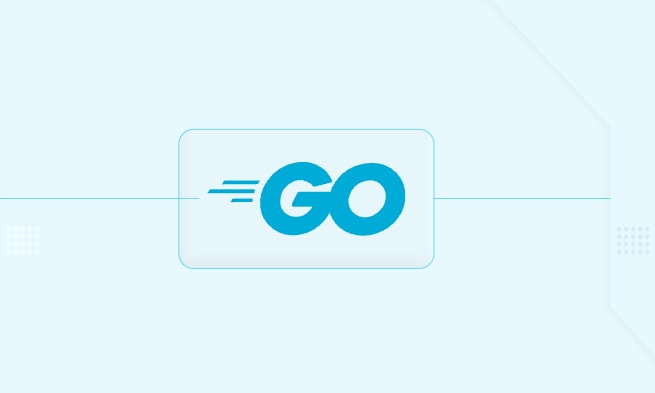Function parameter passing in Go is essentially passing values. All parameter passing is a value passed, that is, the function receives a copy of the variable; but it may show a "passing reference" behavior through pointers, slices, maps and other types. 1. The basic data types such as int, string, and bool pass values, and the modification within the function does not affect external variables; 2. The structure and array are also passed values, copy the entire data structure. If you need to modify the original data, you can use a pointer; 3. Although Slice and map also pass values, they contain addresses pointing to the underlying data, so modification within the function will affect the original data; 4. Use pointer to pass parameters to simulate "passing references", and the function modifys the original variables through pointers. In short, Go language always adheres to the value transfer mechanism, and the so-called "passing reference" is just a side effect caused by specific types of characteristics.

Is it possible to pass function parameters in Go to pass values ??or references? Simply put, all parameter passing in Go language is passed values . That is, when you pass a variable to a function, the function receives a copy of the variable, not the original variable itself.

However, although Go is passing values ??by default, you may see behavior similar to "passing references" through pointers, slices, maps, etc. Let’s take a look at several common situations.

Basic data type: typical pass value
Basic types such as int , string , and bool are indeed completely copied when they are passed into functions as parameters.
func modify(n int) {
n = 100
}
a := 5
modify(a)
fmt.Println(a) // Output is still 5 As you can see here, the modification of n inside the function will not affect the external a . Because what is passed in is a copy of the value of a .

Structure and array: also pass values, but may be a bit "heavy"
Structures and arrays are also value-transfer operations when passing parameters. If you pass a large structure or array in, you will copy the data of the entire structure, which may affect performance.
type User struct {
name string
age int
}
func changeUser(u User) {
u.name = "Tom"
}
user := User{name: "Jerry", age: 3}
changeUser(user)
fmt.Println(user.name) // output or JerrySo, if we want the function to modify the original structure, we usually pass a pointer:
func changeUserPtr(u *User) {
u.name = "Tom"
}This looks like a "passing reference", but it is still essentially a pass-through value - it is just a pass-through value.
Slice and Map: It looks like passing a reference, but it is actually passing a value
Many people mistakenly think that slice or map is a "reference type" so they pass references, but in fact they also pass values, but they pass a copy of the structure containing the underlying data address.
For example slice:
func modifySlice(s []int) {
s[0] = 99
}
nums := []int{1, 2, 3}
modifySlice(nums)
fmt.Println(nums) // Output [99 2 3]Although the content of the slice is modified in the function, it is because the underlying array is shared by multiple slices. But this does not change the nature of the Go language parameter passing value.
Similarly, maps are the same:
func addEntry(m map[string]int) {
m["new"] = 42
}
myMap := make(map[string]int)
addEntry(myMap)
fmt.Println(myMap) // Contains new key-value pairsBecause the map variable passed in is a pointer wrapper to the internal structure, the function can modify the original content, but this is still a side effect under the "value pass" mechanism.
Pointer parameter transfer: simulates the method of "passing reference"
If you want the function to actually modify the variable passed in, the most direct way is to use pointers:
func updateValue(v *int) {
*v = 10
}
x := 5
updateValue(&x)
fmt.Println(x) // Output 10In this way, the function gets the address of the variable and can indirectly modify the original variable through a pointer. But please note that even if you pass a pointer, its address value is still copied from the past, which is the so-called "pointer value".
In general, Go always insists that there is only one way to pass parameters: pass values . As for some of the "passing references" behaviors you see, they are actually based on the effects brought by features such as pointers, slices, and maps. Understanding this will help you write clearer, safer, and more efficient code.
Basically that's it.
The above is the detailed content of Is golang pass by value or pass by reference. For more information, please follow other related articles on the PHP Chinese website!

Hot AI Tools

Undress AI Tool
Undress images for free

Undresser.AI Undress
AI-powered app for creating realistic nude photos

AI Clothes Remover
Online AI tool for removing clothes from photos.

Clothoff.io
AI clothes remover

Video Face Swap
Swap faces in any video effortlessly with our completely free AI face swap tool!

Hot Article

Hot Tools

Notepad++7.3.1
Easy-to-use and free code editor

SublimeText3 Chinese version
Chinese version, very easy to use

Zend Studio 13.0.1
Powerful PHP integrated development environment

Dreamweaver CS6
Visual web development tools

SublimeText3 Mac version
God-level code editing software (SublimeText3)

Hot Topics
 What are the implications of Go's static linking by default?
Jun 19, 2025 am 01:08 AM
What are the implications of Go's static linking by default?
Jun 19, 2025 am 01:08 AM
Go compiles the program into a standalone binary by default, the main reason is static linking. 1. Simpler deployment: no additional installation of dependency libraries, can be run directly across Linux distributions; 2. Larger binary size: Including all dependencies causes file size to increase, but can be optimized through building flags or compression tools; 3. Higher predictability and security: avoid risks brought about by changes in external library versions and enhance stability; 4. Limited operation flexibility: cannot hot update of shared libraries, and recompile and deployment are required to fix dependency vulnerabilities. These features make Go suitable for CLI tools, microservices and other scenarios, but trade-offs are needed in environments where storage is restricted or relies on centralized management.
 How do I create a buffered channel in Go? (e.g., make(chan int, 10))
Jun 20, 2025 am 01:07 AM
How do I create a buffered channel in Go? (e.g., make(chan int, 10))
Jun 20, 2025 am 01:07 AM
To create a buffer channel in Go, just specify the capacity parameters in the make function. The buffer channel allows the sending operation to temporarily store data when there is no receiver, as long as the specified capacity is not exceeded. For example, ch:=make(chanint,10) creates a buffer channel that can store up to 10 integer values; unlike unbuffered channels, data will not be blocked immediately when sending, but the data will be temporarily stored in the buffer until it is taken away by the receiver; when using it, please note: 1. The capacity setting should be reasonable to avoid memory waste or frequent blocking; 2. The buffer needs to prevent memory problems from being accumulated indefinitely in the buffer; 3. The signal can be passed by the chanstruct{} type to save resources; common scenarios include controlling the number of concurrency, producer-consumer models and differentiation
 How does Go ensure memory safety without manual memory management like in C?
Jun 19, 2025 am 01:11 AM
How does Go ensure memory safety without manual memory management like in C?
Jun 19, 2025 am 01:11 AM
Goensuresmemorysafetywithoutmanualmanagementthroughautomaticgarbagecollection,nopointerarithmetic,safeconcurrency,andruntimechecks.First,Go’sgarbagecollectorautomaticallyreclaimsunusedmemory,preventingleaksanddanglingpointers.Second,itdisallowspointe
 How can you use Go for system programming tasks?
Jun 19, 2025 am 01:10 AM
How can you use Go for system programming tasks?
Jun 19, 2025 am 01:10 AM
Go is ideal for system programming because it combines the performance of compiled languages ??such as C with the ease of use and security of modern languages. 1. In terms of file and directory operations, Go's os package supports creation, deletion, renaming and checking whether files and directories exist. Use os.ReadFile to read the entire file in one line of code, which is suitable for writing backup scripts or log processing tools; 2. In terms of process management, the exec.Command function of the os/exec package can execute external commands, capture output, set environment variables, redirect input and output flows, and control process life cycles, which are suitable for automation tools and deployment scripts; 3. In terms of network and concurrency, the net package supports TCP/UDP programming, DNS query and original sets.
 How do I call a method on a struct instance in Go?
Jun 24, 2025 pm 03:17 PM
How do I call a method on a struct instance in Go?
Jun 24, 2025 pm 03:17 PM
In Go language, calling a structure method requires first defining the structure and the method that binds the receiver, and accessing it using a point number. After defining the structure Rectangle, the method can be declared through the value receiver or the pointer receiver; 1. Use the value receiver such as func(rRectangle)Area()int and directly call it through rect.Area(); 2. If you need to modify the structure, use the pointer receiver such as func(r*Rectangle)SetWidth(...), and Go will automatically handle the conversion of pointers and values; 3. When embedding the structure, the method of embedded structure will be improved, and it can be called directly through the outer structure; 4. Go does not need to force use getter/setter,
 What are interfaces in Go, and how do I define them?
Jun 22, 2025 pm 03:41 PM
What are interfaces in Go, and how do I define them?
Jun 22, 2025 pm 03:41 PM
In Go, an interface is a type that defines behavior without specifying implementation. An interface consists of method signatures, and any type that implements these methods automatically satisfy the interface. For example, if you define a Speaker interface that contains the Speak() method, all types that implement the method can be considered Speaker. Interfaces are suitable for writing common functions, abstract implementation details, and using mock objects in testing. Defining an interface uses the interface keyword and lists method signatures, without explicitly declaring the type to implement the interface. Common use cases include logs, formatting, abstractions of different databases or services, and notification systems. For example, both Dog and Robot types can implement Speak methods and pass them to the same Anno
 How do I use string functions from the strings package in Go? (e.g., len(), strings.Contains(), strings.Index(), strings.ReplaceAll())
Jun 20, 2025 am 01:06 AM
How do I use string functions from the strings package in Go? (e.g., len(), strings.Contains(), strings.Index(), strings.ReplaceAll())
Jun 20, 2025 am 01:06 AM
In Go language, string operations are mainly implemented through strings package and built-in functions. 1.strings.Contains() is used to determine whether a string contains a substring and returns a Boolean value; 2.strings.Index() can find the location where the substring appears for the first time, and if it does not exist, it returns -1; 3.strings.ReplaceAll() can replace all matching substrings, and can also control the number of replacements through strings.Replace(); 4.len() function is used to obtain the length of the bytes of the string, but when processing Unicode, you need to pay attention to the difference between characters and bytes. These functions are often used in scenarios such as data filtering, text parsing, and string processing.
 How do I use the io package to work with input and output streams in Go?
Jun 20, 2025 am 11:25 AM
How do I use the io package to work with input and output streams in Go?
Jun 20, 2025 am 11:25 AM
TheGoiopackageprovidesinterfaceslikeReaderandWritertohandleI/Ooperationsuniformlyacrosssources.1.io.Reader'sReadmethodenablesreadingfromvarioussourcessuchasfilesorHTTPresponses.2.io.Writer'sWritemethodfacilitateswritingtodestinationslikestandardoutpu






